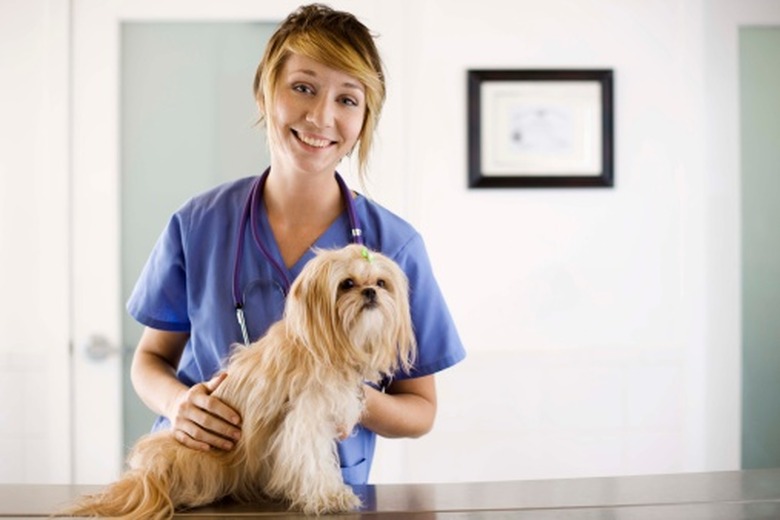How To Heal Hot Spots On Dogs With Apple Cider Vinegar
Things Needed
-
Bowl
-
Water
-
Apple cider vinegar
-
Gauze or a washcloth
-
Scissors or grooming clippers
-
Spray bottle (optional)
Warning
Your dog may need to wear an E-collar if he continues to aggravate the area before it is healed.
Consult a vet if your dog's hot spot does not heal and develops an infection.
Tip
You do not need to apply an antibiotic ointment to the hot spot. It may delay healing.
It is very common for dogs to get hot spots, which are often triggered by irritations caused by allergies or insect bites. The hot spot irritation itself is not the biggest problem. The big problem comes from the misery they cause your dog to feel, which can cause your dog to continuously lick and chew at the irritation, often resulting in delayed healing. A long-haired dog often ends up with a bigger problem because the hair covers the hot spot, which locks in moisture and can lead to an overgrowth of bacteria, more irritation and sometimes an infection. Apple cider vinegar can help kill bacteria, dry out the wound and allow it to heal.
Step 1
Combine equal parts apple cider vinegar and water in a bow; stir together
Step 2
Pour the prepared vinegar and water mixture into a squirt bottle. If using a washcloth or gauze, place in the bowl of vinegar solution and let it soak in the mixture.
Step 3
Trim around your dog's hot spot with scissors or a pair of grooming clippers. Make sure you do not get too close to the skin. You just need the area short enough so fur cannot get into or cover the hot spot you are trying to heal.
Step 4
Get a damp, clean cloth or gauze and very gently clean the area with water.
Step 5
Apply the apple cider vinegar mixture to your dog's hot spot. Spay the solution directly on the spot, if using a spray bottle. Dab the area gently if using gauze or a washcloth.
Step 6
Repeat the process of applying the apple cider vinegar mixture to your dog's hot spot at least a couple of times a day. Continue until healed.
Always check with your veterinarian before changing your pet's diet, medication, or physical activity routines. This information is not a substitute for a vet's opinion.
